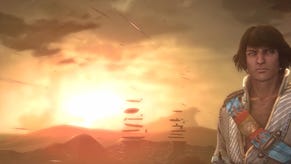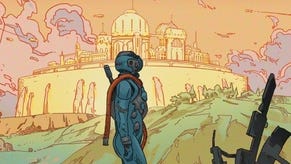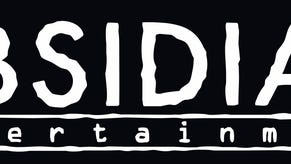Reinventing Dungeon Siege
Obsidian on pulling a neglected RPG into the present.
Obviously we couldn't really use any of the tech from the first two games and we were developing our own engine, which was great. It was actually really nice - it gave us a lot of advantages, but then it's also a big challenge to develop your tech as you're developing the game.
I think people seem to be able to play through it fairly well. We're not hearing about bugs or performance issues, so that's awesome. But definitely it took a lot of time to get there.
The combat system is a big change from the earlier games. It took a lot of iteration... And then one of the other things that was really interesting was figuring out how to make levels for this style of game because it's a very different type of game to the earlier Dungeon Siege games, as well as the usual Obsidian games... We had to find ways to be very combat-focused but not have it drag.
If you get endless combat for hours, the player starts to get bored. It was a very tricky balancing act between having too much combat and not having enough. That was new to us.
I wouldn't say we were not focused on being bug-free before, but we are very rigorous about controlling... it's more like, y'know, boring production stuff. It's not really easy to pin it on just 'it's the engine'. Obviously having our own engine helps, but it's also really hammering down on defining how big the game is going to be and making sure we get all the bugs out and making sure we're doing things in ways where bugs are less likely to happen.
With the engine, it's more a matter of knowledge than anything else. When you're working with your own tech, you're the guys who know the tech the best. That is always an advantage. But again, I chalk up about half of it to the tech and half to us being very adamant that this was not going to be a buggy game and we were not going to have the technical issues we had with other projects.
Any time you get a lot of issues like that it is very stressful. I didn't work on [New Vegas] so can't give so much details on it but it did... As a company, something we've really been working to improve is our reputation with bugs. And I think that's panning out with Dungeon Siege III.
It's very solid.
So, I think there are two things. One is the rose-coloured glasses effect. I think older games were just as buggy [as newer ones], but we're more tuned-in at looking for the bugs. I personally remember old PC games and even old Nintendo games that had tons of bugs.
I think the big difference is that the core technology of games has gotten more complex and it's very difficult to get out all the little bugs. Usually in an old 2D Nintendo game a bug is no more than a few lines of code to fix, whereas in a 3D game it could be something in the animation system stomping memory in the renderer. There are so many more layers that it's very hard to catch all the bugs.
On the flipside, I think more what gamers should expect when they go out and buy a game is that they get an experience that's worth their money. But it's very hard to say what that is.
You have an industry where World of Warcraft or an MMO comes out and nobody really expects it to be done when it ships. You're buying it with the expectation that it's going to get a lot more stuff, they're going to fix a lot of balance issues and all that. At the same time, for a single-player game, the evaluation that you have to make is if someone puts $60 down on a game are they getting their money's worth?
I've played games that are more buggy than other games but I enjoyed them a lot more. It's hard for me to say whether gamers have a right to less buggy games. Where a developer spends their time is often... It takes time to fix bugs and it also takes a certain... there are some really ambitious games that have bugs because they're ambitious, and they don't have the time [to fix them], or they spend time on making the content cooler rather than fixing the bugs.
Obviously, if the game is so broken that you can't play it then it's not worth your money. On the flipside, if you have an amazing game that has some bugs and you spend $60 on it, maybe you can feel OK with that.
Having that as a company rep is not what we want, so as a company we're very focussed on removing bugs. But when I go out to buy games, it doesn't necessarily upset me if I find a few bugs.
We do have some job postings for something but I can't talk about it, except to say that people will be very excited when they find about it.
Nathaniel Chapman is lead designer of Dungeon Siege III at Obsidian Entertainment.
















